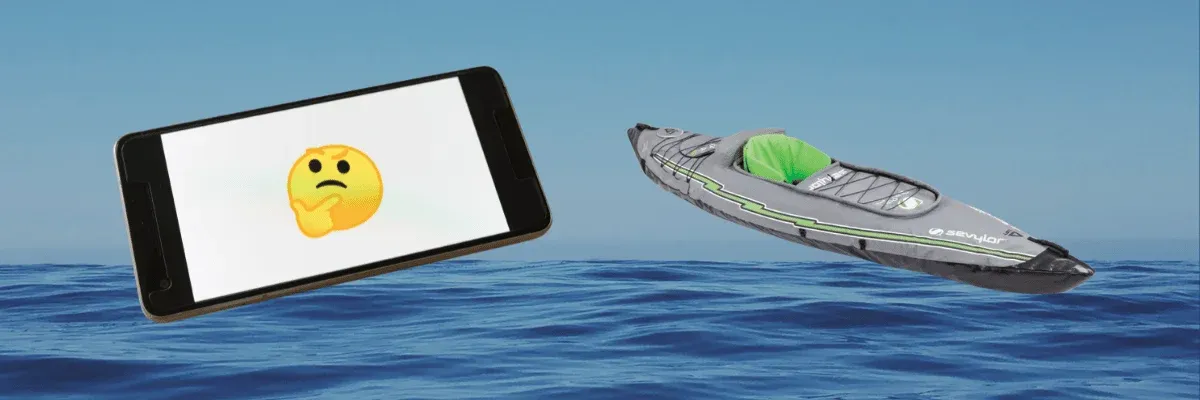Kayaking is a beloved activity for many outdoor enthusiasts, offering a unique way to explore waterways and enjoy nature. While traditional hard shell kayaks have been the go-to for years, the rise of inflatable kayaks has introduced a new wave of convenience and portability. However, as with any product, there are trade-offs to consider. In this comprehensive article, we'll delve into the drawbacks of inflatable kayaks, providing a balanced perspective for those considering their options.
Key Takeaways:
- Inflatable kayaks may lack the durability and performance of hard shell kayaks.
- They can be more susceptible to damage from sharp objects and rough conditions.
- The convenience of portability and storage comes with a compromise in stability and tracking.

Durability Concerns
When it comes to the longevity of a kayak, many paddlers have concerns about the durability of inflatable models. Unlike hard shell kayaks, which are typically made from robust materials like fiberglass or rotomolded plastic, inflatable kayaks are often constructed from durable rubber or PVC. While these materials are surprisingly durable, they are not immune to punctures or abrasions. This means that paddling in areas with sharp rocks or debris can pose a risk to the integrity of the kayak.
Moreover, the sun's UV rays can degrade the materials over time, leading to a shorter lifespan than that of hard shell kayaks. Many inflatable kayak manufacturers include a UV-resistant coating, but this does not guarantee complete protection. Paddlers must be diligent in maintaining and storing their inflatable kayaks to preserve their condition.
Performance Limitations
In terms of performance, inflatable kayaks often fall short when compared to their hard shell counterparts. The design of most inflatable kayaks means they have multiple air chambers, which can affect the kayak's rigidity. An extremely rigid kayak provides more stability and better tracking in the water. In contrast, inflatables can flex and bend, which may result in a less efficient paddling experience.
This flexibility can also be a disadvantage in windy conditions or rough waters. Hard shell kayaks cut through the water with more precision, while inflatables can be pushed around by the wind, making it challenging to maintain a straight course. For those interested in activities like sea kayaking or multi-day trips, this can be a significant drawback.
Susceptibility to Damage
One of the most significant concerns with inflatable kayaks is their vulnerability to punctures and leaks. While many are made from surprisingly durable materials, they are still more prone to damage than hard shells. Sharp objects, such as fishing hooks or branches, can easily puncture the skin of an inflatable kayak, leading to leaks that can cut a paddling trip short.
To mitigate this risk, most inflatables come equipped with a repair kit. However, repairs can be time-consuming and may not always hold up, especially if the damage occurs in a critical area. Paddlers must be cautious and prepared to handle potential issues while on the water.

Stability and Tracking
Stability is a crucial factor for novice kayakers and those who prioritize a relaxing paddling experience. While many inflatable kayaks offer a wide base that can provide initial stability, they may not perform as well when conditions change. The buoyancy of inflatables can make them feel tippy, especially for paddlers who are accustomed to the solid feel of a hard shell kayak.
Tracking, or the kayak's ability to hold a straight line, is another area where inflatables can struggle. Without the rigid structure and defined keel of hard shell kayaks, inflatables may require more effort to paddle straight. This can lead to a less enjoyable experience, particularly for those who value efficiency and speed on the water.
Portability vs. Performance
The biggest advantage of inflatable kayaks is their portability. Unlike hard shell kayaks, which often require roof racks and a significant amount of storage space, inflatables can be deflated, rolled up, and packed into a carrying bag. This makes them ideal for those with limited storage or who wish to travel with their kayak.
However, this convenience comes at the cost of performance. Inflatable kayaks typically do not offer the same level of speed, agility, or responsiveness as hard shell models. For serious paddlers or those looking to use their kayak for specific activities like fishing or touring, this trade-off may be too great.
Inflation Time and Effort
Another consideration is the time and effort required to inflate and set up an inflatable kayak. While many models come with a manual or electric pump, the process can still take anywhere from 5 to 15 minutes. This is time that could be spent on the water if using a hard shell kayak.
Additionally, ensuring that each chamber is inflated to the correct pressure is crucial for performance and safety. This requires attention to detail and can be a hassle for those who prefer the simplicity of a traditional kayak.
Limited Customization Options
Customization is a significant aspect of kayaking for many enthusiasts. Hard shell kayaks often come with a variety of features that can be modified or upgraded, such as seats, footpegs, and storage compartments. Inflatable kayaks, on the other hand, have limited options for customization.
The seats in inflatable kayaks, for example, are often basic inflatable cushions that provide minimal support and adjustability. Upgrading these components can be challenging, as the design of inflatable kayaks does not always accommodate aftermarket accessories.

Summary
Inflatable kayaks offer a world of convenience and accessibility, but they come with a set of drawbacks that potential buyers should consider. Durability, performance, susceptibility to damage, stability, tracking, inflation time, and customization options are all areas where inflatable kayaks may fall short compared to hard shell kayaks. While they are a fantastic option for casual paddlers and those with space constraints, serious kayakers or those embarking on more challenging adventures may find that a traditional hard shell kayak better suits their needs.

FAQs
Can inflatable kayaks handle rough waters?
While inflatable kayaks are surprisingly durable, they are generally not as well-suited for rough waters as hard shell kayaks. Their flexibility and buoyancy can make them difficult to control in challenging conditions.
How long do inflatable kayaks typically last?
The lifespan of an inflatable kayak depends on the quality of the materials, frequency of use, and how well it is maintained. With proper care, most inflatable kayaks can last several years.
Are inflatable kayaks safe?
Yes, inflatable kayaks are safe when used appropriately and when paddlers follow safety guidelines. It's important to ensure they are properly inflated, avoid paddling in hazardous conditions, and always carry a repair kit.
Related articles:











